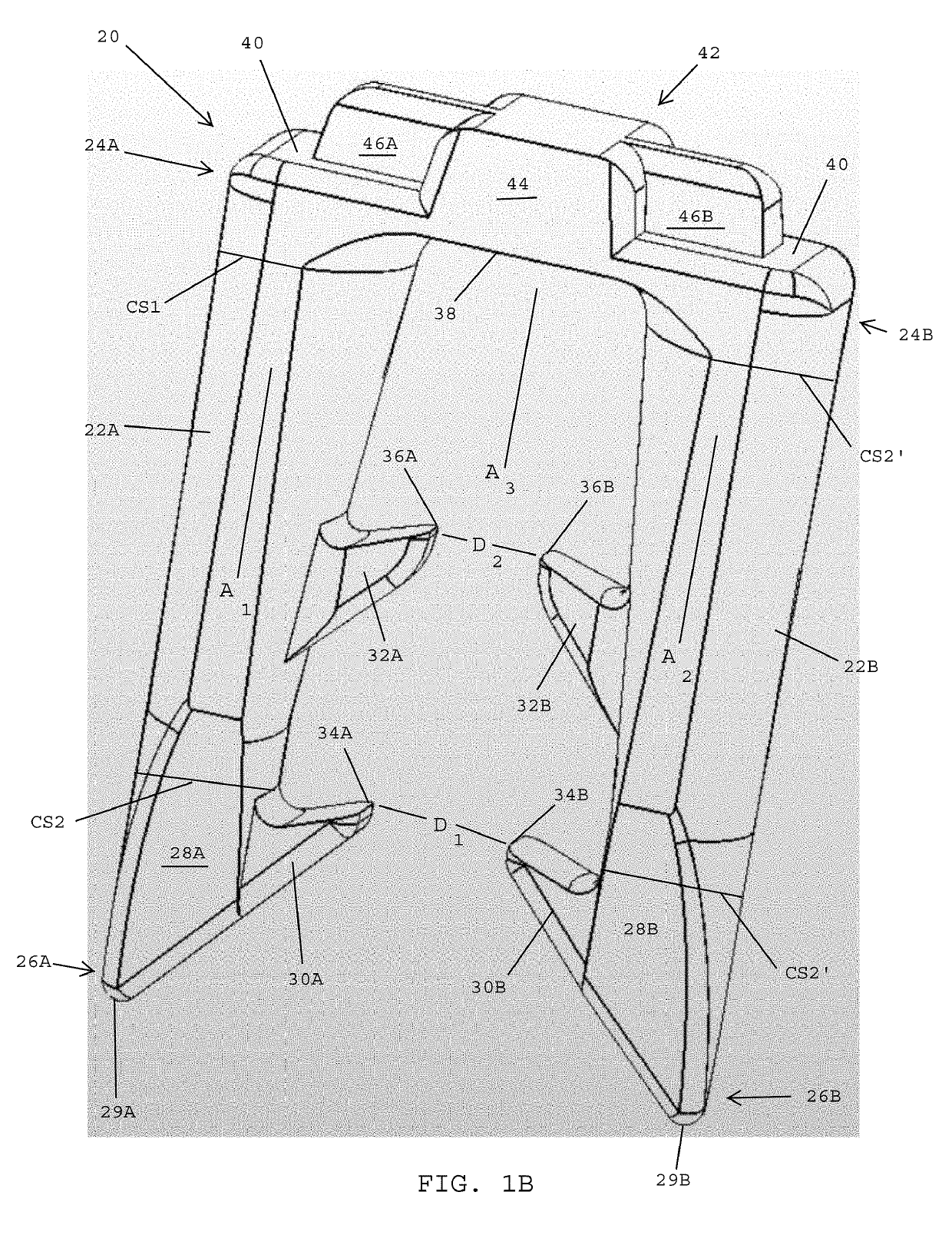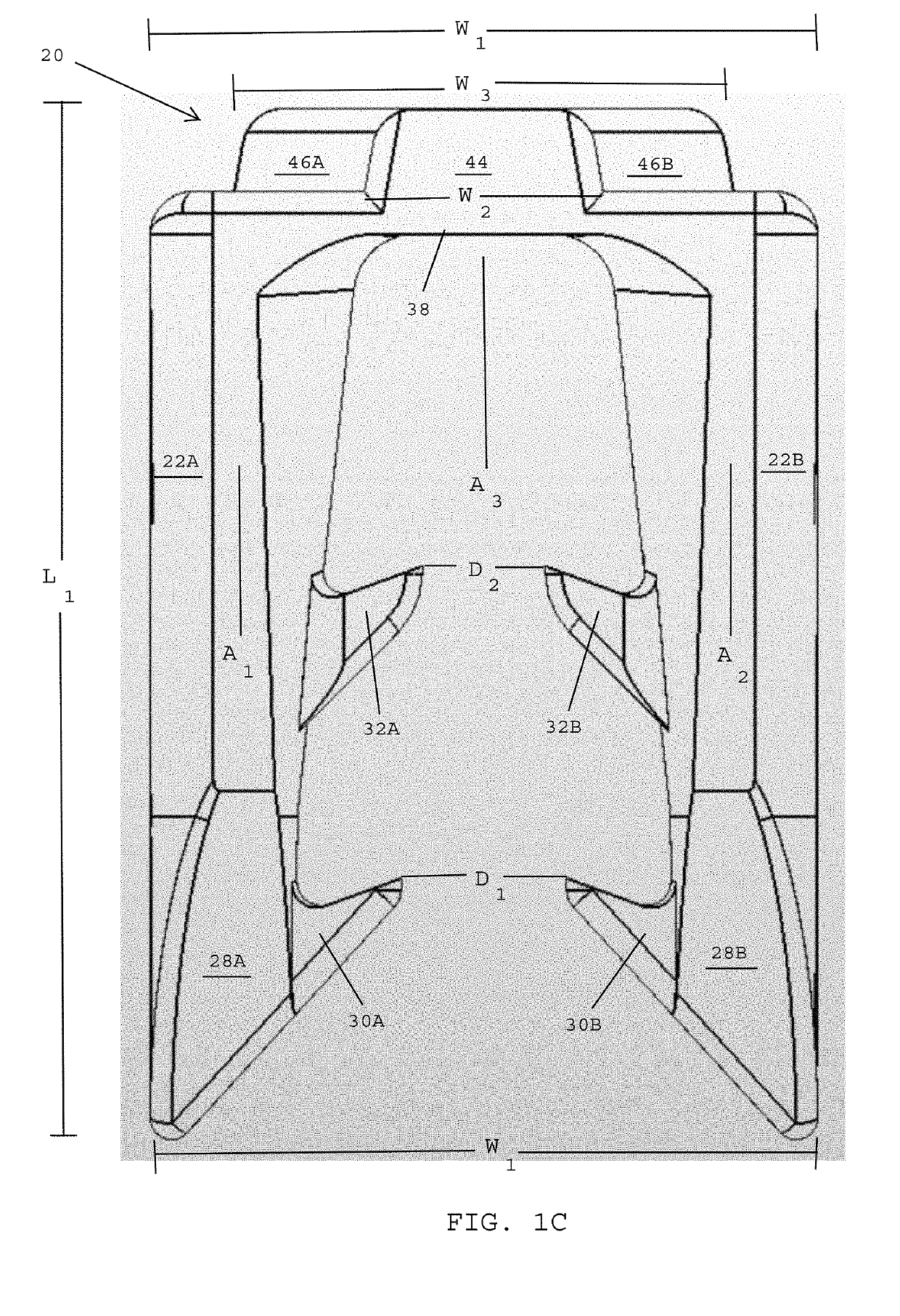Surgical fasteners for mesh and tissue fixation
a surgical fastener and mesh technology, applied in the field of surgical procedures, can solve the problems of reducing lifting ability, affecting the operation, and affecting the operation, so as to prevent the twisting of the surgical fastener, improve the operation efficiency, and minimize tissue bleeding.
- Summary
- Abstract
- Description
- Claims
- Application Information
AI Technical Summary
Benefits of technology
Problems solved by technology
Method used
Image
Examples
Embodiment Construction
Referring to FIGS. 1A-1C, in one embodiment, a surgical fastener 20 for securing prosthetic devices to tissue preferably includes a first leg 22A having a proximal end 24A and a distal end 26A. In one embodiment, a first cross sectional area CS1 adjacent the proximal end 24A of the first leg 22A is greater than a second cross sectional area CS2 adjacent the distal end 26A of the first leg 22A. In one embodiment, the first leg 22A tapers inwardly between the proximal end 24A of the first leg 22A and the distal end 26A of the first leg 22A. In one embodiment, the largest cross sectional area of the first leg is adjacent the proximal end 24A of the first leg and the first leg tapers inwardly between the proximal end and the distal end thereof.
In one embodiment, the first leg 22A extends along a first longitudinal axis A1. In one embodiment, the first leg 22A includes an insertion tip 28A located at the distal end 26A of the first leg. In one embodiment, the insertion tip 28A has a dist...
PUM
 Login to View More
Login to View More Abstract
Description
Claims
Application Information
 Login to View More
Login to View More - R&D
- Intellectual Property
- Life Sciences
- Materials
- Tech Scout
- Unparalleled Data Quality
- Higher Quality Content
- 60% Fewer Hallucinations
Browse by: Latest US Patents, China's latest patents, Technical Efficacy Thesaurus, Application Domain, Technology Topic, Popular Technical Reports.
© 2025 PatSnap. All rights reserved.Legal|Privacy policy|Modern Slavery Act Transparency Statement|Sitemap|About US| Contact US: help@patsnap.com



